Family Homelessness INNformation Series: Housing
Watch the latest interview here:
This month’s Family Homelessness INNformation Series is focused on housing. Specifically, the importance of adequate and affordable housing critical to creating a community where no child or family is homeless. Throughout the month we will be exploring Calgary’s current affordable housing situation landscape, what we as an agency and as the homeless-serving sector are working on and most importantly, what we are doing to create solutions for the lack of affordable housing available to families in our city. First, we begin with a story…
It is a tale of two cities in one place, divided by the disparity of income and access to housing. On one side, Calgary has the highest rate of homeownership and single-family housing among the major cities in Canada. On the other side of the divide, Calgary has the lowest supply of purpose-built rental, subsidized housing and co-operative housing in the country. Economically, the gap widens when you look at income. Calgary has the highest income inequality among the country’s big cities.
The recent Housing in Canada’s Big Cities report by the City of Calgary, Affordable Housing Division[1] paints a Dickensian picture of a city divided, one side living in a season of darkness, the other in a season of light. It shows a city where the gap between the majority and the impoverished minority is growing wider.
For most of us, Calgary is a great city. The Canadian dream of owning your own home is our reality and making a comfortable living is our possibility. It shows up in our home ownership and income numbers. We have one of the highest rates of homeownership in the country; 71% compared to the average in other cities of 59%. We can also boast the highest median income in the country at $97,334 compared to $75,418, 56% in other cities. Calgary households can also claim a single-family home as their own with 56% enjoying the status, compared to an average of 36% in other cities.
Unfortunately, for lower-income families who comprise a small percentage of our city’s population leaving them with little political or economic leverage, the picture is not so bright. While only 4% of households in this city with incomes over $80,000 are overspending, 60% of households with incomes below $60,000 are overspending, meaning, they are spending more than 30% of their income on housing. “Insufficient income to pay rent was the top barrier to housing identified by respondents in a recent survey of 75 homeless (81.3% reported it as a big problem), with the secondary barrier being inability to pay security deposit or first/last month’s rent (61.3%)” (Sylvestre et al., 2017, p. 48)[2]. Families are over-spending, not through choice but rather, it is the outcome of income inequality and lack of affordable housing supply which leaves them with limited access to appropriate housing and little means to improve their financial well-being.
Lower-income families are often precariously housed. Many are forced to make crucial decisions on where to spend the money they have; will it be food, shelter, or transportation? The stress of having to decide between rent and food or how to find affordable daycare for their child so they can go to work or back to school exacerbates the stress of poverty. “When parents suffer from poor mental health this can leach onto children, even when they are too young to be able to explain their emotions. Constant increased stress and cortisol can also lead to developmental changes in the brain and can affect a child’s emotional stability, ability to form interpersonal relationships, and confidence” (Gulliver-Garcia, 2016, p. 18)[3]. Continuous stress impairs a parent’s ability to improve their own educational, financial or physical well-being and to make plans for their children’s futures. The stress then cascades down onto young minds, limiting future possibilities of change for children living in poverty.
With less than 24% of all rental housing consisting of 2 or more bedrooms, Inn from the Cold purchased an apartment building in an inner city community and renovated it. Named, Journey House 2, it is one example of how through community collaboration, we are able to create appropriately sized affordable housing units for larger families. Journey House 2 provides 10 families with more than two children, secure and affordable housing with essential supports designed to help achieve independence.
To end child and family homelessness, we need more affordable housing and we need to address the generational trauma of poverty and its debilitating impact on individuals and entire families. Addiction, family breakdowns, mental health issues, violence are not the causes of homelessness. Gold and Hauser (1998) stress that families experiencing homelessness predominantly experience mental health issues as a result of becoming homeless rather than a cause and that economic factors are now seen as a primary cause of family homelessness (p. 87)[4]. These side-effects are the derivative outcome of years of mental, physical and emotional trauma breaking down an individual’s resistance to stress while impairing their ability to build resiliency.
A significant component of the work we do at the Inn is to provide families in our Family Emergency Shelter as well as our housing programs with supports designed to help them heal from generational trauma as well as the immediate stressors of homelessness. As well, we connect them to other agencies and programs to ensure they have access to targeted and practical tools to address gaps in their education, job readiness, and financial literacy.
This programming is vital to assisting families in achieving independence. Through our Family Support Program, we are able to provide families with the tools they need to end the cycle of intergenerational trauma, poverty, and homelessness which lead them to our doors. In addition, ensuring the trauma and toxic stress of homelessness do not become permanent fixtures in a child’s developmental milestones safeguards children’s futures, breaking the cycle by increasing their resiliency and coping skills. Learn more about our programs here.
Through community action, we can ensure children and families experiencing homelessness have a safe place to call home and the supports they need to heal and live healthy thriving lives. No agency or individual can achieve this alone, but together we can ensure bright futures for many generations.
Learn more about housing and community action plans here:
- https://innfromthecold.org/how-we-help/journey-house/
- http://www.calgary.ca/_layouts/cocis/DirectDownload.aspx?target=http%3a%2f%2fwww.calgary.ca%2fCS%2fOLSH%2fDocuments%2fAffordable-housing%2fHousing-in-Canadas-Big-Cities.pdf&noredirect=1&sf=1
- https://www.placetocallhome.ca/?utm_source=banfield-google&utm_medium=search&utm_campaign=nhs&utm_content=text-en
- http://www.seniors-housing.alberta.ca/housing/affordable_housing_strategy_engagement.html
- http://www.calgary.ca/CS/OLSH/Pages/Affordable-housing/Affordable-Housing.aspx
- https://www.cbc.ca/news/politics/canada-national-housing-strategy-right-minister-duclos-1.4594100
- http://www.seniors-housing.alberta.ca/documents/PAHSSummary.pdf
- http://calgaryhousingcompany.org/
- http://www.horizonhousing.ab.ca/
[1] City of Calgary, 2018. Housing in Canada’s Big Cities. Retrieved from: http://www.calgary.ca/_layouts/cocis/DirectDownload.aspx?target=http%3a%2f%2fwww.calgary.ca%2fCS%2fOLSH%2fDocuments%2fAffordable-housing%2fHousing-in-Canadas-Big-Cities.pdf&noredirect=1&sf=1
[2] Sylvestre et al., 2017. A Profile of Families in the Emergency Family Homeless Shelter System in Ottawa, Ontario, Canada. Retrieved from: http://cjur.uwinnipeg.ca/index.php/cjur/article/view/64.
[3] Gulliver-Garcia, 2016. Child & Family Homelessness: A Determinant of Children’s Mental Health. Retrieved from: https://www.raisingtheroof.org/wp-content/uploads/2016/02/CMH-Supplement.pdf
[4] Gold and Hauser, 1998. Homeless families: A treatment outcome study. Retrieved from: https://link.springer.com/article/10.1023/A:1005343501615
















